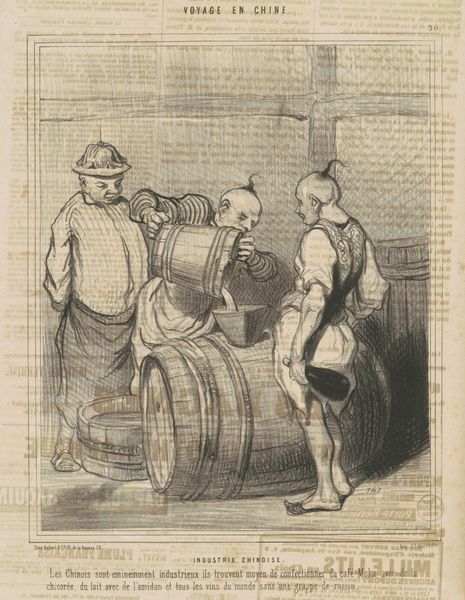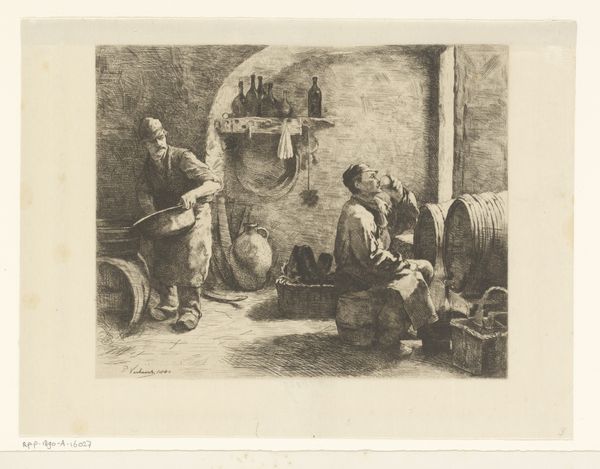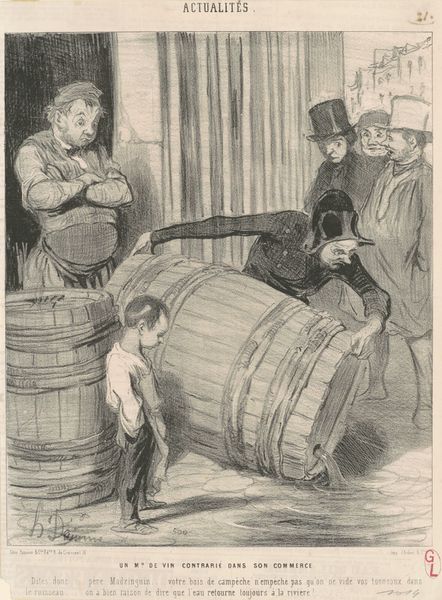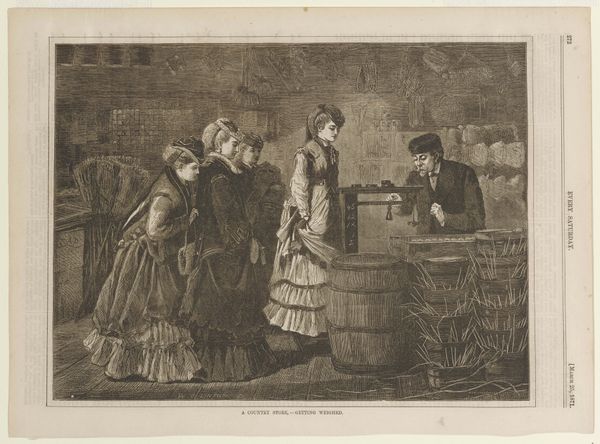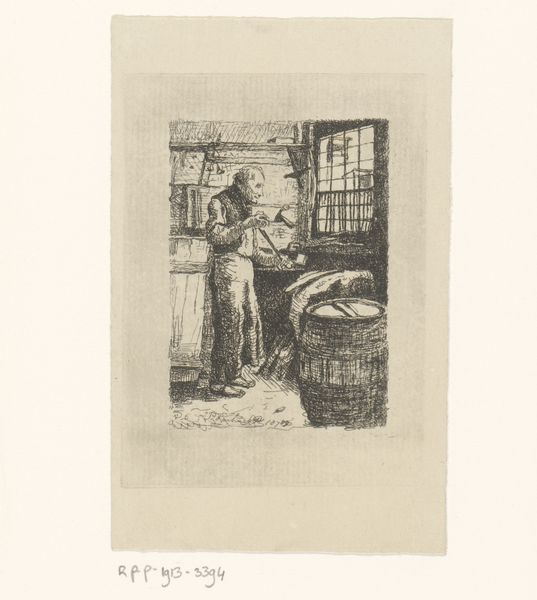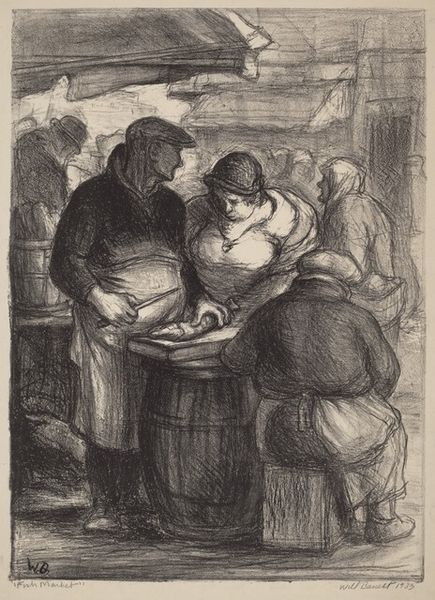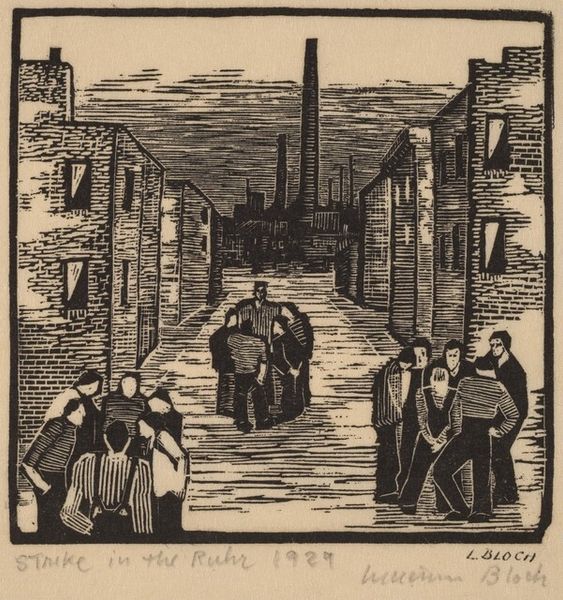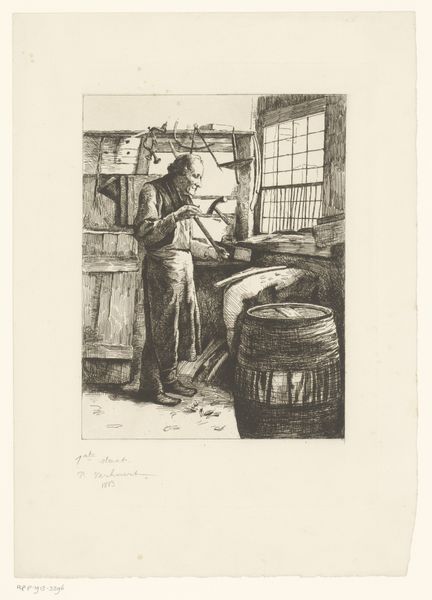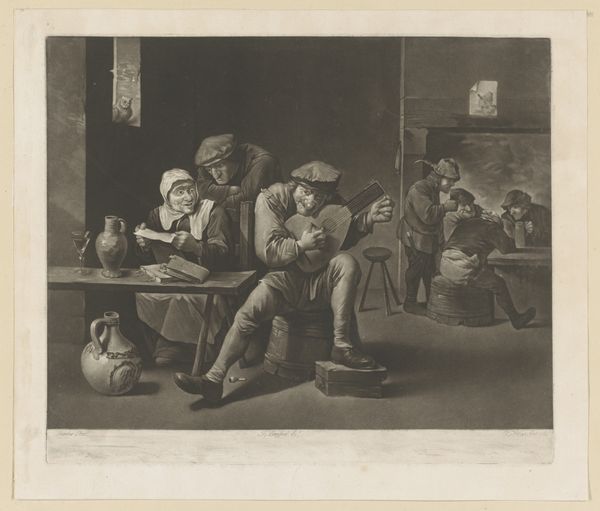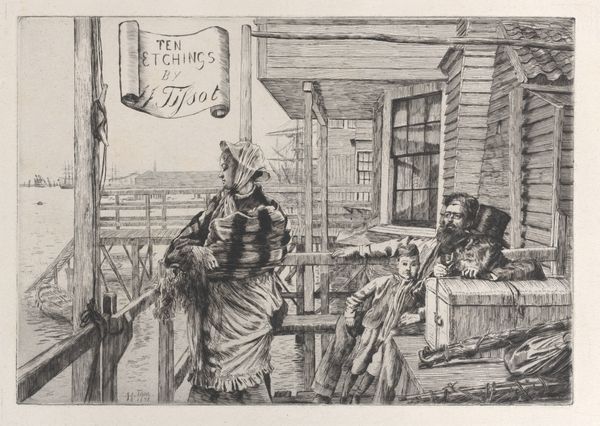
drawing, print, etching, ink, engraving
#
drawing
# print
#
etching
#
ink
#
cityscape
#
genre-painting
#
street
#
engraving
#
realism
Dimensions: height 171 mm, width 164 mm
Copyright: Rijks Museum: Open Domain
Willem Wenckebach created this etching called ‘De Rotterdammer Sloot te Amsterdam, gedempt in 1867’ but with no date specified, which presents a scene teeming with figures and baskets, all rendered in meticulous detail. The composition is structured by a convergence of lines that lead the eye into the heart of the marketplace, where merchants engage in their daily trade. Note how Wenckebach employs a high vantage point and a dense network of lines to construct space and form. The buildings loom over the scene, creating a sense of enclosure. The textures are richly articulated, from the rough surfaces of the barrels to the woven patterns of the baskets, enhancing the image's tactile quality. The use of line and tonal contrast is not merely descriptive but also expressive, evoking the sensory overload of a bustling urban market. Consider the historical context: the Rotterdammer Sloot was filled in 1867, marking a shift in Amsterdam's urban landscape. Wenckebach's image captures a moment of transition, reflecting on the transformation of urban space and its impact on daily life. This artwork, therefore, invites us to reflect on the interplay between urban development, social practices, and historical memory.
Comments
No comments
Be the first to comment and join the conversation on the ultimate creative platform.

